

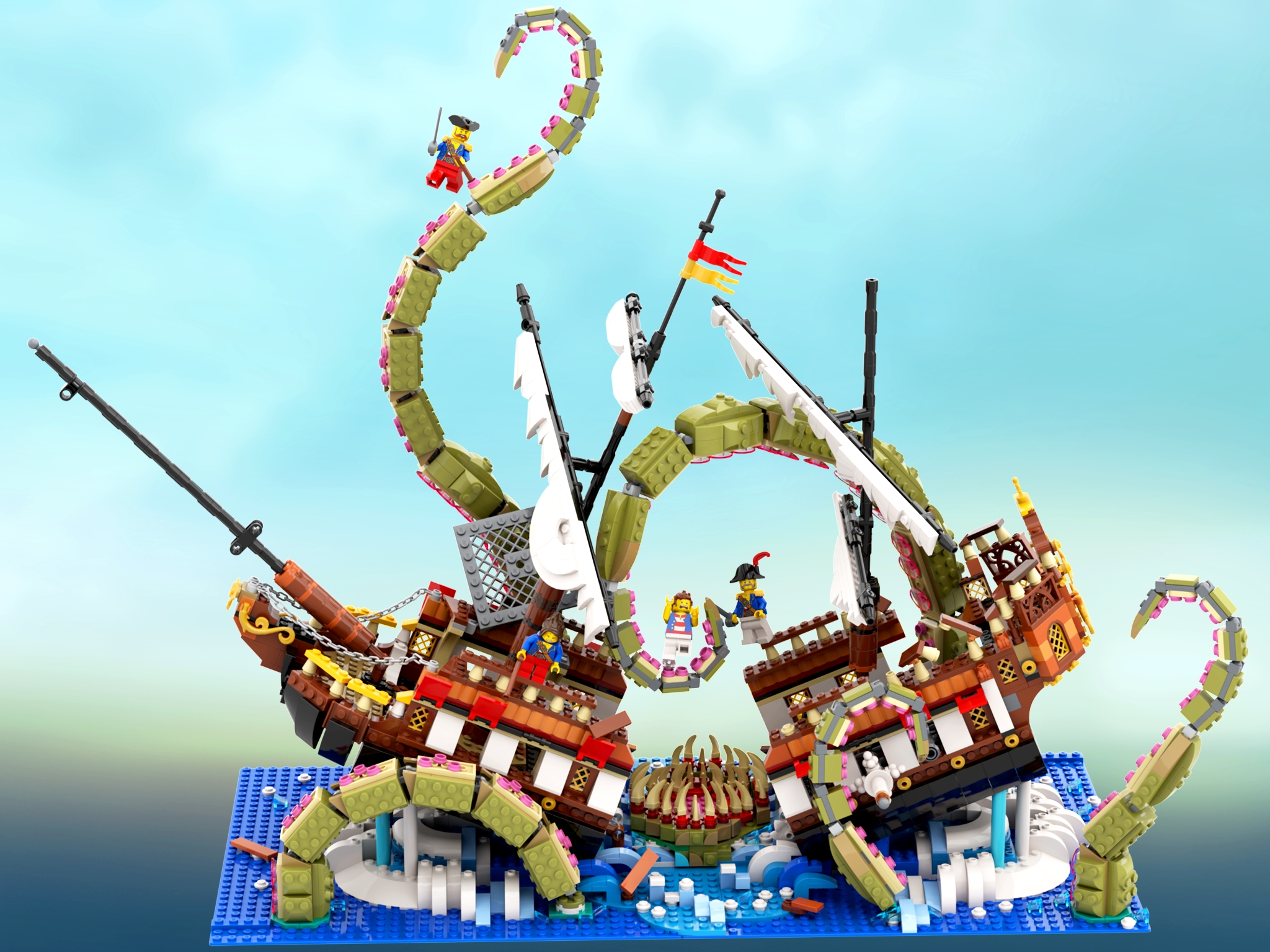

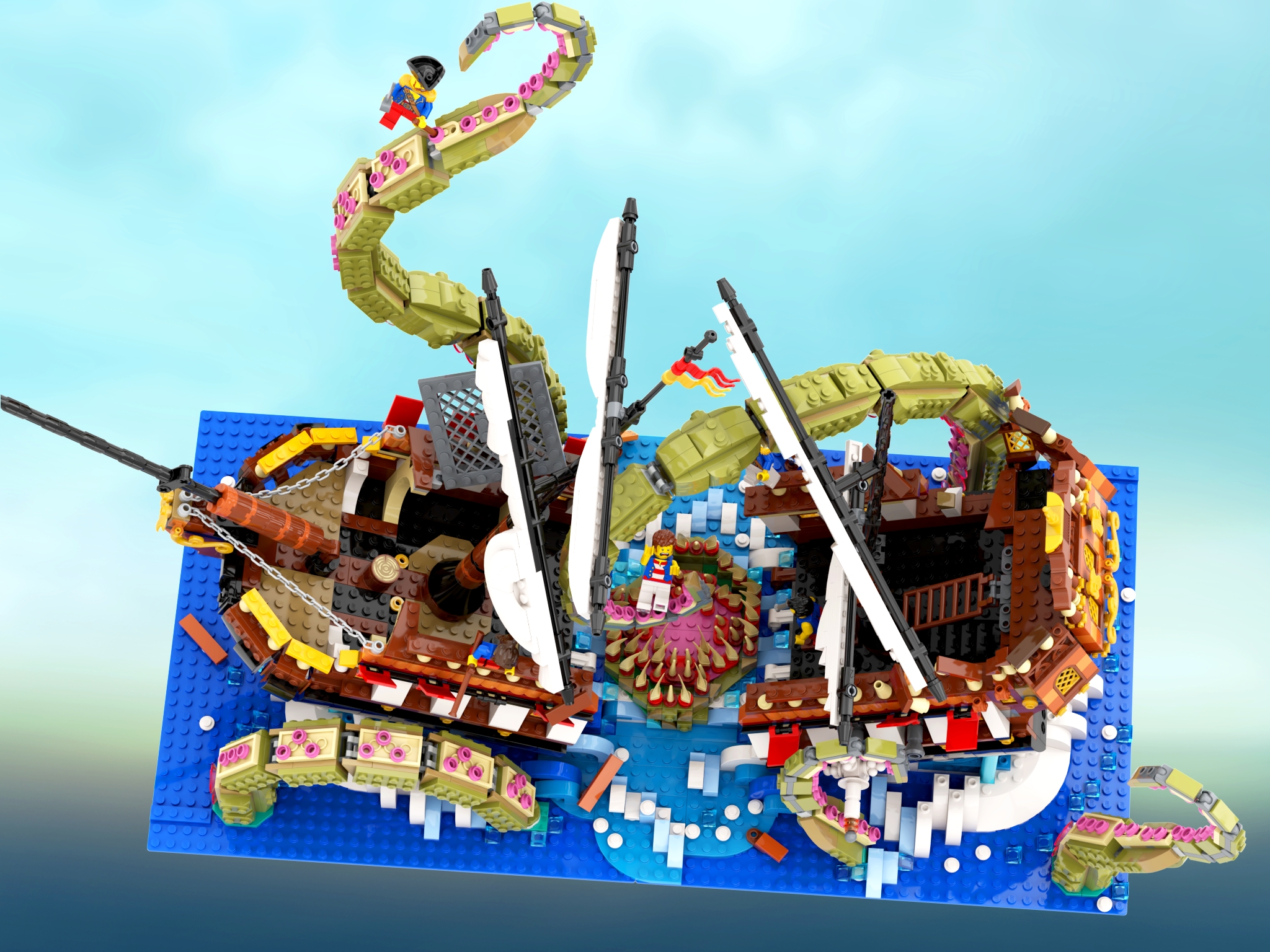


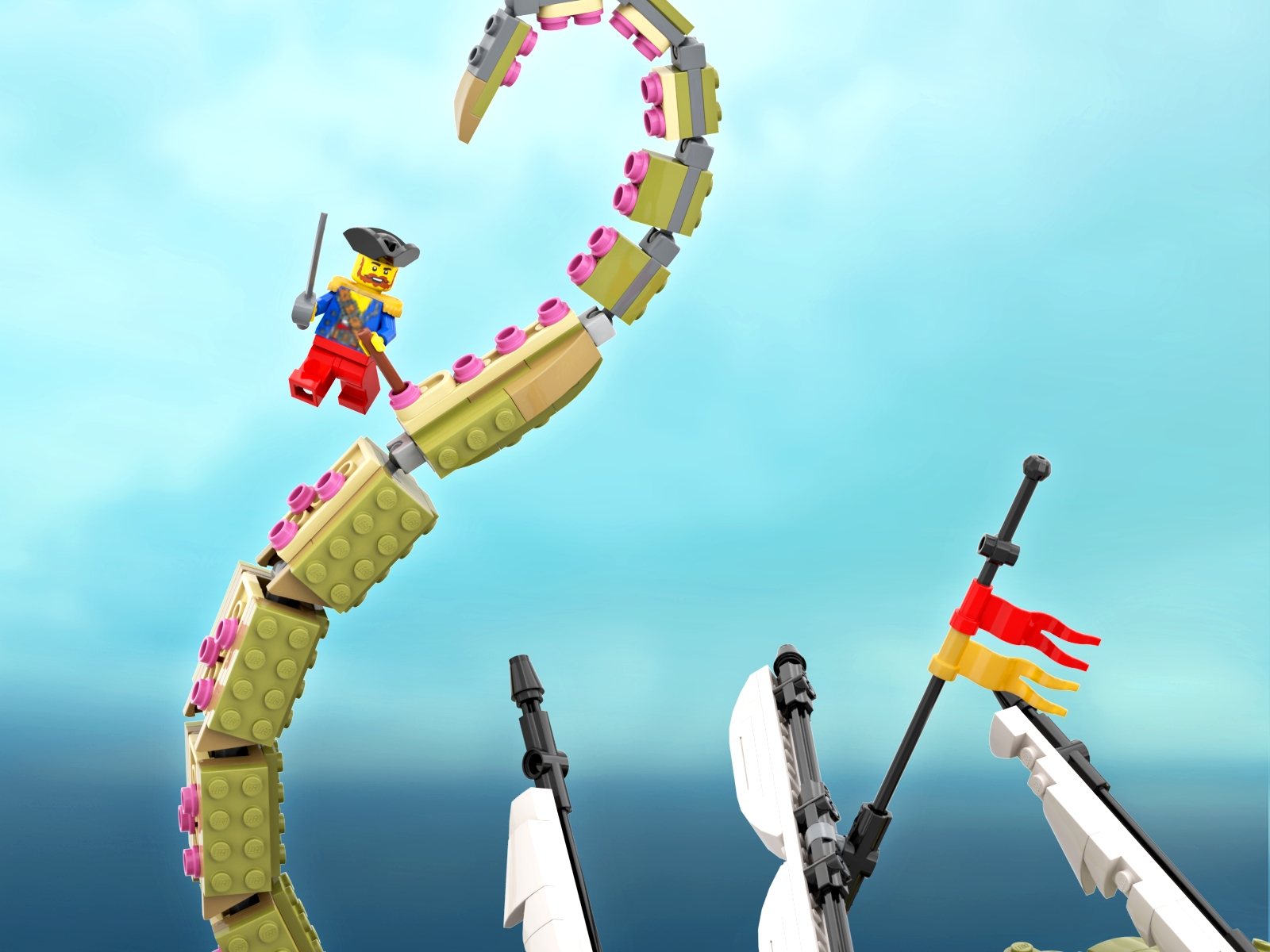










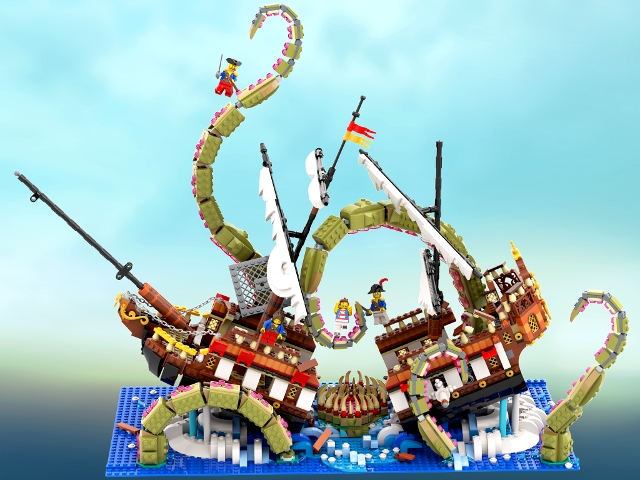

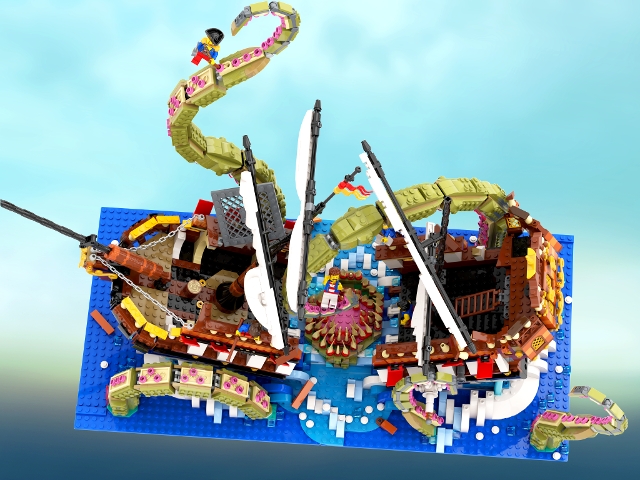

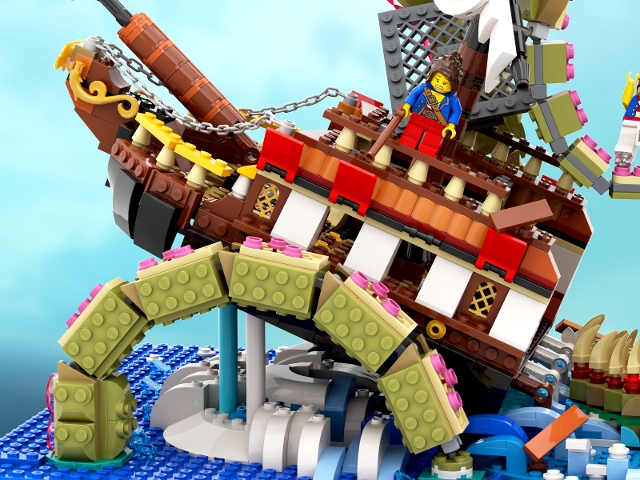
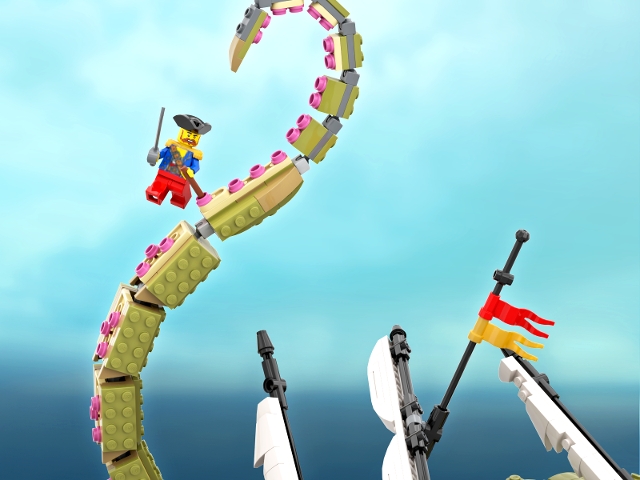
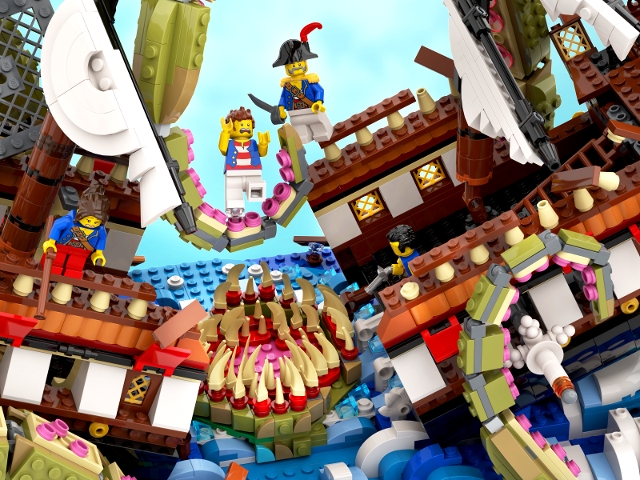
From the deep ocean rises a giant, fearsome creature. Mighty tentacles emerge from the water, curls around the ship, and snaps it in half! In the foaming water, a monstrous, hungry maw awaits! It is the legendary kraken, and the sailors must give it their all to survive.
Inspiration
:
I have always been fascinated with sea monsters and kraken legends. From the stories I read as a kid, to their more recent appearances in movies and pop-culture. For a long time, I have wanted a LEGO set depicting a kraken attack, in the middle of sinking a ship, and the sailors (minifigures) facing the creature, some brave, some scared, doing everything they can to survive.
Here in this entry, I hope to make that a real LEGO set, available to many LEGO fans :)
The set features a diorama with a dynamic scene: Giant tentacles surrounds a ship. The ship is broken in half and sinking towards the middle, where a huge maw with many teeth lays open. The sailors are busy firing canon balls, spearing the tentacles, even being lifted and fed towards the open mouth!
Fun details:
All in all, I wish to make the set look alive and dynamic, with an epic scale matching the sea monsters I imagined as a kid, using the minifigure size as reference.
The build:
Height: 50cm
Width: 30.2cm
Length: 68cm
Total elements: 2201 (332 unique parts)
Design insights:
One of the major challenges of designing this set is angling the ship model. The two halves are angled towards the middle, for the sinking and “snap” effect. For Bricklink Designer Program, the model must be robust and easy to build. Here, both halves of the ship model have a technic brick as base frame, with pin holes connected to axle elements and angled connectors pointing down. These are connected to round bricks and technic bricks (with axle holes), and secured to the base plate. Each half of the ship is supported by six of these axle pillars to hold the angle and weight securely.
For the tentacles, again, axle elements with angled connectors are hidden between each segment, such that each long tentacle can stay robust under its own weight. Towards the tip, C-clips and mixels ball joints are used for posability and support the lighter weight. Base of the tentacles has a technic pinhole, and connect to the baseplate securely, similar to the official “Tallneck” set released in recent years.
Under the ship and kraken’s maw, there is a hidden frame of interconnected, long technic bricks. It has large area of connection with the two baseplates, securing them together. It also connects directly to the ship and kraken mouth above, so the weight of these sub-models are supported by a continuous large frame.
Why not be the first?